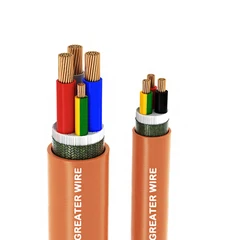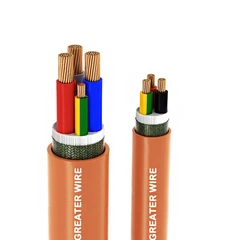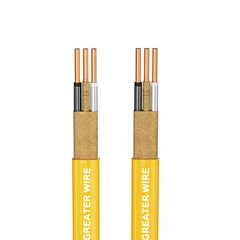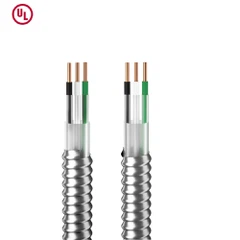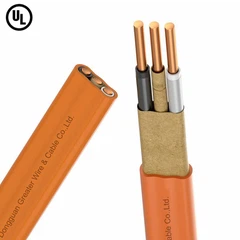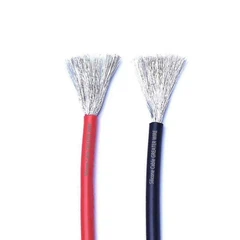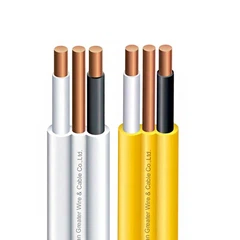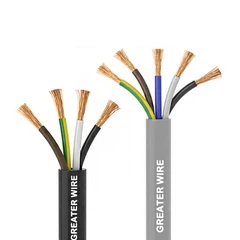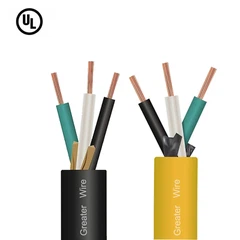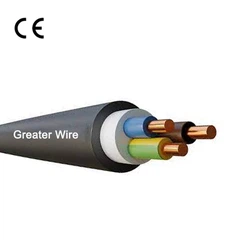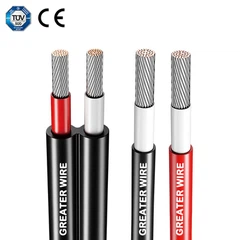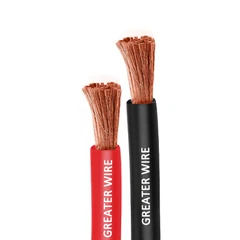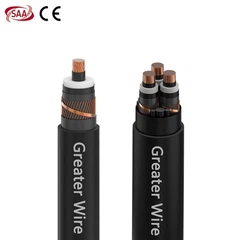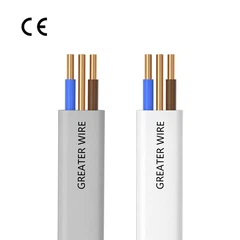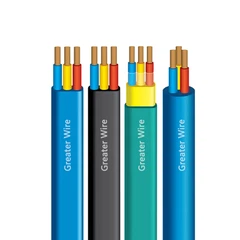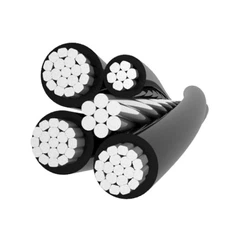When selecting wires for electrical installations, it is crucial to understand the characteristics and applications of various types of wires. Two commonly used options are TFFN wire and MTW wire. Though they share similarities in construction and materials, they serve distinct purposes due to their unique properties and certifications. In this article, we'll compare TFFN wire and MTW wire across several dimensions, including construction, application, certifications, and performance, to help you determine the best choice for your specific needs.
Overview of TFFN Wire
TFFN wire stands for Thermoplastic Flexible Fixture Nylon-coated wire, a flexible, durable electrical conductor commonly used in lighting fixtures, control circuits, and appliances. It is particularly known for its flexibility and ability to perform well in dry and damp environments.
Key Features of TFFN Wire:
Construction:
Stranded copper conductor for enhanced flexibility.
Insulated with PVC (polyvinyl chloride) and coated with a protective nylon jacket.
Ratings:
Voltage rating: Up to 600 volts.
Temperature rating: 90°C (194°F) in dry environments and 75°C (167°F) in damp conditions.
Applications:
Ideal for use in lighting fixtures, control wiring, and conduit systems.
Advantages:
Lightweight and flexible.
Resistant to abrasion and chemicals.
Overview of MTW Wire
MTW wire, or Machine Tool Wire, is designed specifically for industrial applications involving machinery and equipment. It is highly durable and capable of withstanding the mechanical stresses often encountered in machine tool operations.
Key Features of MTW Wire:
Construction:
Typically features a stranded copper conductor for flexibility.
Insulated with PVC material but lacks the additional nylon coating found in TFFN wire.
Ratings:
Voltage rating: Up to 600 volts.
Temperature rating: 90°C (194°F) in dry environments, 60°C (140°F) in wet environments, and 105°C (221°F) for certain conditions.
Applications:
Specifically designed for use in industrial machinery, control panels, and electrical enclosures.
Advantages:
Excellent resistance to oils, coolants, and other industrial substances.
Durable in high-stress environments.
Comparison of TFFN and MTW Wire
1. Insulation and Coating
TFFN Wire:
Features PVC insulation with an additional nylon coating, making it highly resistant to abrasion and chemicals.
MTW Wire:
Insulated with PVC only, providing adequate protection but lacking the additional resistance offered by nylon-coated wires.
2. Flexibility
TFFN Wire:
Designed to be flexible for installation in tight spaces, making it suitable for lighting fixtures and control wiring.
MTW Wire:
Equally flexible but designed to endure mechanical stress, making it ideal for industrial environments.
3. Temperature Ratings
TFFN Wire:
90°C in dry environments and 75°C in damp conditions.
MTW Wire:
90°C in dry environments, but with an added 60°C rating for wet conditions, making it more versatile for industrial use.
4. Environmental Resistance
TFFN Wire:
Nylon coating provides additional resistance to chemicals and abrasion. However, it is less effective against oils and coolants.
MTW Wire:
Specifically designed to resist oils, coolants, and industrial contaminants, making it better suited for machinery and tool applications.
5. Certifications and Standards
TFFN Wire:
Approved for use as fixture wire and in dry and damp locations per NEC standards.
MTW Wire:
Complies with stringent industrial standards, such as UL (Underwriters Laboratories) and CSA (Canadian Standards Association) for machine tools and industrial applications.
6. Applications
| Feature | TFFN Wire | MTW Wire |
|---|---|---|
| Primary Use | Lighting fixtures, control wiring | Machinery and industrial equipment |
| Environment | Dry and damp | Industrial, wet, and high-stress areas |
| Chemical Resistance | Moderate (thanks to nylon coating) | High (designed for oils and coolants) |
When to Use TFFN Wire?
Lighting Fixtures:
TFFN wire is lightweight and flexible, making it easy to install in tight spaces for wiring light fixtures.
Conduit Wiring:
Works well in raceways and conduit systems where abrasion resistance is needed.
Control Circuits:
Ideal for use in low-voltage control circuits requiring flexibility.
Damp Locations:
Nylon-coated insulation ensures safe performance in damp conditions.
When to Use MTW Wire?
Machinery Wiring:
MTW wire's resistance to mechanical stress and industrial substances makes it the preferred choice for machine tools and equipment.
Control Panels:
Commonly used in control panels for industrial machinery.
Oil and Coolant Resistance:
MTW wire's ability to withstand oils, lubricants, and coolants ensures long-term performance in industrial environments.
Electrical Enclosures:
Suitable for wiring in cabinets and enclosures where physical stress may occur.
Can TFFN and MTW Wires Be Interchanged?
While TFFN and MTW wires share similarities in their construction and voltage ratings, they are designed for different purposes. Using one in place of the other could lead to suboptimal performance or safety issues:
Use TFFN Wire for:
Flexible wiring in residential, commercial, or light-duty industrial settings.
Use MTW Wire for:
Industrial machinery or environments involving oils, coolants, and mechanical stress.

